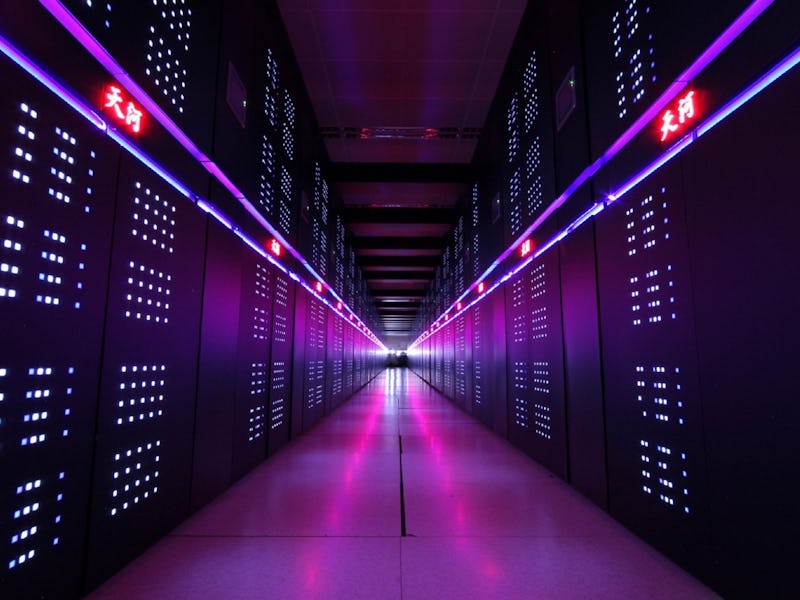Is there anybody out there? Combining a space telescope with a supercomputer might be one way to answer that question faster than we anticipate.
Researchers recently tested a software program that runs data from the Square Kilometre Array — a massive array of radio telescopes — through China’s Tianhe-2 supercomputer, which was the fastest computer in the world from 2013 until June 2016 before being surpassed by the Sunway TaihuLight. The hope is that the combined power of the two machines will be enough to scan, study, and parse the massive amount of data about the skies above and figure out what — or more importantly, who — is up there.
The SKA is being built to detect even very faint radio waves produced by extraterrestrial life, but only with the help of the right hardware and software capable of teasing out the signal from the noise. The SKA telescope will ultimately need a dedicated array of supercomputers more powerful than any in existence today, but testing it out with Tianhe-2 is a first step towards proving it’s capable of scanning the night sky for alien life and other cosmic phenomena.
The telescope itself will be a network of hundreds of thousands of antennas facing the sky. An international consortium is planning the endeavor, which is more ambitious than any scientific project ever completed. Organizers hope to begin construction in 2018, with the first phase complete by 2023. That phase — massive on its own — will have only about 10 percent of the planned capacity for the full array.
Artist’s impression of the low frequency antennas to be built in Australia as part of the Square Kilometre Array.
Assuming it actually gets built, SKA will be able to scan the universe with a power and sensitivity like never before, and will contribute to our understanding of alien life in a number of important ways. With 50 times the sensitivity of any existing radio telescope, and 10,000 times the scanning speed, SKA could do wonders for the search for extraterrestrial intelligence (SETI). If alien civilizations are transmitting signals out there, SKA should be able to detect them on a range of dozens of light years.
Additionally, the telescope will improve our understanding of the formation of Earth-like planets elsewhere and how commonly these fall into the habitable zone of solar systems. Astrobiologists will be able to search the skies for the building blocks of life, including specific amino acids, by scanning for their spectral signatures.
